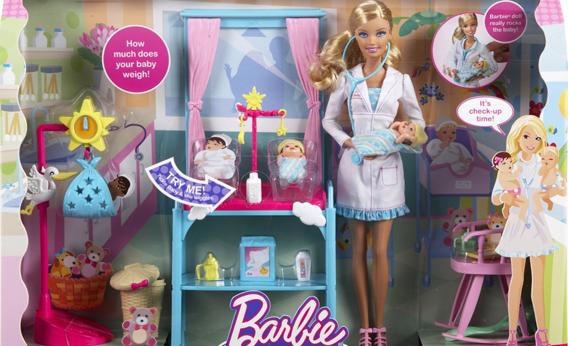On Dec. 12, Maria Mejia, 24, along with 39 other members and associates of the Bronx Trinitarios Gang, was charged by the NYPD, the DEA, and other law enforcement agencies with offenses including murder and attempted murder. Specifically Mejia was charged with, among other crimes, the 2005 murder of Miguel Perez, 20, as revenge for the killing of another Trinitarios gang member. According to the New York Post, whose headline shouted “Girl Gang Called the ‘Bad Barbies’ on the Loose in the Bronx,” Mejia wore knee-high brown boots to court. And, oh yes, Mejia is the alleged leader of a Trinitarios offshoot girl gang called the Bad Barbies.
Girls + violence + Barbie = a very excited press! But who are these Bad Barbies? And do they tease their hair, retro Barbie style? Or do they have more of a steampunk Barbie look?
The Trinitarios are a Latin gang formed in the U.S. prison system in the early 1990s and active in major cities including New York. There are a number of smaller factions within it, though most don’t have catchy post-riot-grrl-friendly names. (For instance, one group under the Trinitarios umbrella calls itself, “Violating All Bitches.”) The Trinitarios are not known for their sensitivity toward “genders-and-sexualities”—the U.S. Attorney’s office reports that former Trinitarios leader Leonides Sierra ordered Trinitarios members “to kill an unnamed Victim (‘Victim-17’) because he was believed to be a homosexual, which violated the gang’s rules.”
Anyway, back to the Bad Barbies. From the breathless coverage, one might think that girl gangs are fast becoming a big thing. They’re not. Their members comprise only an estimated two percent of the U.S. gang population. But some primarily male gangs include a few women so estimates for general female gang membership across the country is as high as 10 percent; my guess is no one really knows. The presence of girls in gangs has been getting attention since the 1980s, but what gangs mainly are is male. Gangs are comprised largely of men between the ages of 12 and 24, and largely of men of color. In the U.S., unemployment, deep poverty, racism, terrible education, and almost complete lack of other life opportunities are the causal context.
So despite the sex appeal of knee high boots, gender is a smokescreen in this story. Poverty and unequal opportunity in the U.S., and murders by one gang member of another gang member—that’s what’s known, and is all too normal.
Maud Lavin is the author of Push Comes to Shove: New Images of Aggressive Women (MIT), published in paperback in fall 2012.
